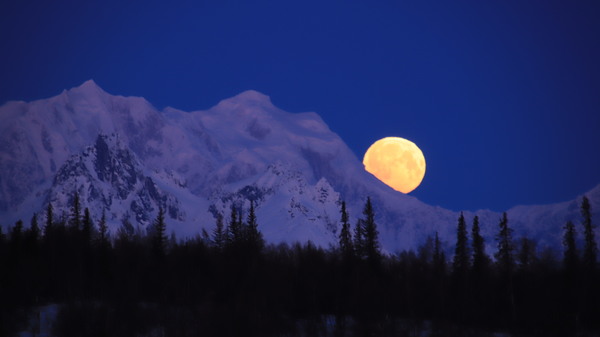January: Wolf Moon
The year’s first Full Moon, Wolf Moon, is named after howling wolves, but it's also often called the Moon After Yule in the Anglo-Saxon tradition.

January’s Full Moon is known as the Wolf Moon. Winter Moon in the Alaska Range, US.
©iStockphoto.com/R Lolli Morrow
Jan 2025: See the planets at their best
Wolf Moon 2025
2025年1月14日 (火)7時26分
Wolf Moon 2026
2026年1月3日 (土)19時02分
Times for the Wolf Moon vary by time zone. Times and dates are based on the local time in Tokyo. Change location
Howling Wolves in January
January’s Full Moon is known as the Wolf Moon, after active wolves during the early parts of the year.
The name is thought to have a Celtic and Old English origin, brought over to North America by European settlers. Other Celtic names for the Full Moon include Stay Home Moon and Quiet Moon, while in some Native American cultures, it is called Severe Moon or Center Moon.
In Anglo-Saxon culture, January’s Full Moon was also called the Moon after Yule. Pre-Christian Yule (or Juul) is the ancient winter solstice festival usually celebrated around December 21.
12 Full Moon Names
The Full Moon has been integral to tracking the change of months and seasons since ancient times.
Today, we use many of these ancient month names as Full Moon names, and many of them come from Colonial Americans adopting Native American names into their calendars.
Although the most commonly used Full Moon names are English interpretations of Native American names, some are also Celtic, Anglo-Saxon, medieval English, and Neo-Pagan.
When are the Full Moons this year?
Do Wolves Howl at the Moon?
Wolves howl to communicate over long distances. It is a way of saying “here I am” to the rest of the pack or “stay away” to intruders.
There is no indication that the Moon phase plays any particular part in the wolf’s calls, but wolves are nocturnal animals, so they are generally more active at night. Wolves do howl in the direction of the sky because projecting their howl upward carries the sound farther.
Sleep, crime, and menstruation: how Full Moons affect humans